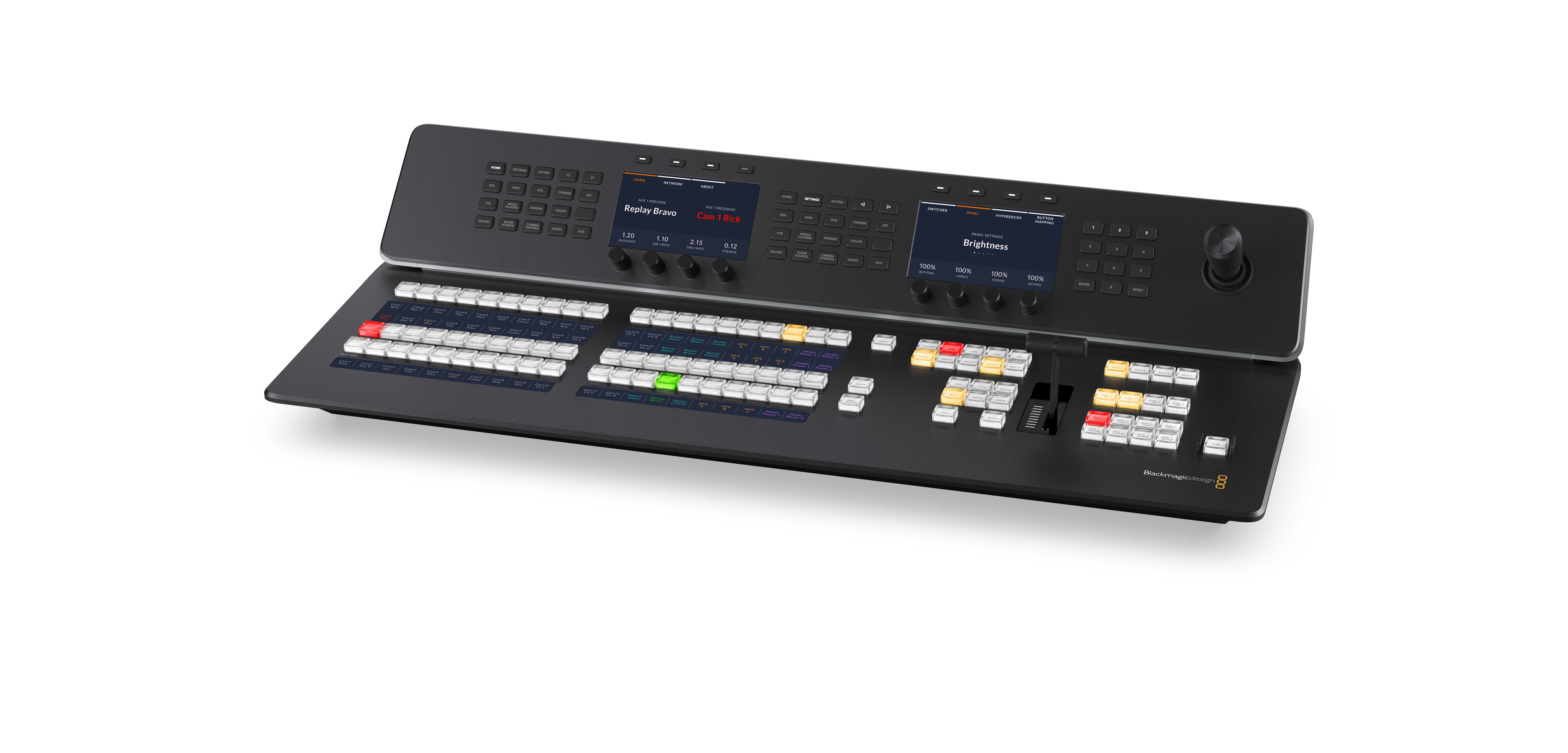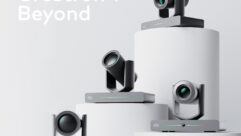
An Inside Look at the HDBaseT Standard, Part 1
Aug 2, 2012 11:36 AM,
With Bennett Liles
Listen to the Podcasts
|
Editor’s note: For your convenience, this transcription of the podcast includes timestamps. If you are listening to the podcast and reading its accompanying transcription, you can use the timestamps to jump to any part of the audio podcast by simply dragging the slider on the podcast to the time indicated in the transcription.
HDBaseT made a big showing at InfoComm this year along with hardware with it built-in. Micha Risling, marketing chair of the HDBaseT Alliance is here to explain the technology, clear up some of the technical points, and let us know what’s coming next with it, coming right up on the SVC Podcast.
SVC: Micha, thanks for being on the SVC Podcast and I’ve been wanting to talk about HDBaseT for a good while now so tell me about the HDBaseT Alliance. Who’s in it and how did it all get started?
Well, actually probably two years old by now. It was formed by Valens, Samsung, LG, and Sonic Features Entertainment with a clear objective of promoting the HDBaseT technology as the connectivity of choice. The Alliance, like other alliances normally do, is responsible for the specification, certification program, and promotional activity. We have 40 members and we see the numbers growing so over all we are very excited with our Alliance and it’s a very active one. [Timestamp: 1:34]
It sounds like more people are getting on board all the time and one of the things that a lot of people are wondering about is when are we going to be seeing more of the actual hardware with HDBaseT built-in? I know we saw some of this at Infocomm this year so where are we now with native HDBaseT devices entering the market?
It’s never enough. People expect to see more and more, so I would say that there are hundreds of HDBaseT products already in the market and I believe you are seeing many of them at Infocomm and what is probably most important is the feedback that we actually get from vendors who are selling them and more important the end users who are using the product. And the feedbacks are nothing less than great so we have switchers from all the leading brands including Alliance members such as Crestron and Extron, AMX, Atlona, Gefen , Grandbeing, and others. We have projectors launched at Infocomm from Panasonic and Projectiondesign will probably be available in the next couple of months. We have digital signage display from a company called Primeview and as you can imagine those are the ones that I can disclose I can tell you that other products have been developed and we expect them to hit the market in probably the end of 2012, early 2013. So overall there is a huge momentum around HDBaseT products are from, which is probably what interest our audience. [Timestamp: 3:01]
Right, I would think that this year is going to be a pretty big one for HDBaseT looking at what was at InfoComm and the new projectors coming in. No external boxes needed. Just plug straight into the RJ-45 on the projector and everything goes through there. So what are the implications here for digital signage? I guess one of the big things is that you can run power on the same cable.
Yeah, power is one of the features. As a general statement digital signage is clearly one of the segments that we in Alliance are after. We speak with installers and system integrators who specialize in this market like we do and ask them what are the needs? You will probably get a combination of the need for high quality video, long distances, high reliability of installation, flexibility, scalability, lower cost of ownership would be great and probably a few others that I forgot but in a nutshell I would say that this is exactly what HDBaseT delivers. Now as you consider the install base of HDBaseT ports as you said we’ve seen that at Infocomm, mainly in the form of switchers and matrixes, that are already installed like in schools, universities and other public places you can imagine how easy it is now for installers to install digital signage displays and that HDBaseT technology is built-in and yes, both daisy chain and star topologies are supported. Power is first is one of the elements that excite most of them and we anticipate some digital signage displays especially those who are okay with 100W, which is what is being supported to implement also the power of HDBaseT feature. [Timestamp: 4:45]
And one of the things that interests me particularly since I work in the academic AV market is its potential there, say for multiple classroom situations.
Yes, especially given the installed base because the companies already using HDBaseT are very familiar and well positioned in this market and now exactly as you said today you need a kind of an extender on the remote side that you will be able to hook up to a projector digital signage and one of the reason why projection manufactures and digital signage manufacturers decided to use HDBaseT is simply because they were asked by the installers themself because you know it doesn’t make sense to go all the way with a single cable and by the end of it you need to use an extender and then you need to take out the HD mic cable and internet cable and other control cables where it makes sense to simply go all the way with HDBaseT using the RJ45 connector. [Timestamp: 5: 42]
Now if we can get a little more on the technical side briefly here, there’s a lot of talk about the 5-play signal and all of the different things you can convey. What actually happens to the HDBaseT signal when it enters the display device and how does that differ from just running HDMI into it?
So it’s a kind of a magic, but let me try to get you some data on that side. So let’s focus on the receiver side because we just said digital signage. So on the receiver side we have a chipset that performs the magic, the Valens VS100 is the chip set that does that and in a way it demodulates the signals that are coming from the line table. Originally it’s been modulated using the propriety version of something that you’re probably familiar with is the Ethernet pulse amplitude modulation. This is what is being used with gigabit and ten gigabit Ethernet. So the chipset demodulates that and then encapsulates the different signals. You can see that as is taking the five different signals, capsulate that and then the receiver actually needs to encapsulate that and then you get the native HDMI and Ethernet and controls which are part of the 5-play. I know it sounds easy but in reality the nature of the infrastructure that we are dealing with mainly the cables because we are dealing with poor cables and the patch panels and the distances they all require sophisticated best-in-class DSP based techniques and this is, I would say, the magic behind the HDBaseT technology. As a side note, you better know how to design advanced physical layers before actually going and developing the technology like HDBaseT. [Timestamp: 7:28]
An Inside Look at the HDBaseT Standard, Part 1
Aug 2, 2012 11:36 AM,
With Bennett Liles
And investing a lot of money and time and effort into it. As you hinted at just now, you have the technology developed and deployed but there’s a lot of bad cable out there being used with it. When some people don’t get the advertised result on that they may tend to blame the technology rather than the bad cable they’re trying to use so what specific type of twisted pair cable should be used for HDBaseT?
And this is a great point so we announced and we stand behind our words that we can do with any Cat-5e unshielded UTP cable. By the way, the reason why we chose Cat-5e and not Cat-5 is because Cat-5e cables are well defined. Still someone can go and use a cable that carries the Cat-5e symbol on that but actually it’s not a Cat-5e but as long as this cable is a real Cat-5e cable it will work perfectly with HDBaseT. We also saying that if you have a way to install a better cable, please do it because it makes a lot of sense and I will say that most of the new installations are probably at least Cat-6 and above which are is even better but in normal cases if you already have a Cat-5e cable, a 100 meter long installed, and use that for Ethernet you should be able to do HDBaseT. [Timestamp: 8:50]
OK and we’re talking about real world installations where things sometimes go wrong so how does the HDBaseT chipset or the device that uses it react if the power blinks off for a few seconds? How fast does it get back up and running again?
Yeah so it’s obviously hard to say because it has to do with the way that the system is designed. Now HDBaseT is an important element but still it’s only one element in a design of a switch or a matrix or even an extender. The fact that it has been used for like two years by now means that the engineers to develop a chipset figure out to handle that. So this shouldn’t be an issue and if you have an issue it’s probably not related necessarily to the HDBaseT chipset but rather to the entire system design especially the reset circuitry of the power circuit. [Timestamp: 9:40]
When users get to the point of actually spending money on the hardware they’ll probably look for equipment that’s HDBaseT certified and the word certified can mean different things so how are devices actually HDBaseT certified?
So first of all, thanks for mentioning it because from my prospective this is one of the elements that makes the technology very successful. And Alliance announced that it has a certification program in place with approved labs that are responsible for the testing itself. It is well defined process the vendors are going through in the past few months and we are getting products all the time but listening to consumers we have understood the importance of having a comprehensive certification program in place. One that has shown durability, one that focuses on the important features and probably what consumers are caring the most without comprising. I would say that we see our self as kind of a gatekeeper. The one who helps consumer to buy product that will actually work and given our experience in this market especially with other technologies that’s normally where technologies fail and if someone is going and buying expensive product and tries to connect that to a different product from a different vendors and they fail to work this is exactly where the consumer itself will probably blame technology for and next time will simply go and buy something else. This is something that we cannot afford. [Timestamp: 11:09]
And we were talking about being able to send power on the same line as all the other things. One of the most recent iterations of HDBaseT increases the power to 100W. When we’re talking about running fairly large venue projectors say at least in the 6000-lumen range, they’re currently going to need more than that. Do you see a future version being able to power projectors in that range?
First of all you need to be a kind of a believer in order to stay ahead of competition. Yes, today we already do 100W, is it enough? The answer is for sure no. We always want more. Consumers always want more than that. Personally I see two ways to satisfy the hunger for more power, either by sending more power juice or by simply having greener consumer electronics products and as always the truth is somehow in between. From our perspective, yeah we can do more than 100W the limitation is the regulation that is required and then it makes it much more complicated so we stayed under the 100W limitation simply because we would like to comply with existing regulation. Can it be changed? Will it be possible for us to work with the guys who change the regulation? We are trying, it’s not easy. [Timestamp: 12:32]
There’s some confusion as to how you get that power onto the cable. You’re not using dedicated pairs for that. You’re putting power on all four pairs, right?
Yes, we do and when it comes to power over HDBaseT we call it POH. We are using similar techniques to what has been used and is being used with power over Ethernet. It’s exactly the same techniques, of course we extended it a little bit in order to be able to support the 100W and without getting into the details because this is—this can take us like a full day to cover. We are simply sending the power over the transformer. There are transformers and the transformer is center-tapped. We are sending DC, which makes it safer, and as I said, we are committed to the UL regulation, which limits us to 100W. So it’s not just sending the power, take into consideration the fact that now you would like to use HDBaseT in an area in which you have waters or kids. The fact that you are sending DC over that and the controls are being part of the solution makes it much more safer than the existing solution. [Timestamp: 13:46]
And so running 100W on HDBaseT, what’s a realistic line length for running that level of power?
100 meter or 328ft., this is what we aim for.
So you’ve got the full advertised distance running a hundred watts.
Yes. That’s the target because we pitch for 100 meters. We say five-play over that so that also includes the power.
And HDBaseT like all technologies, you’re adding to it, you’re making it better so what other features are you looking for future versions of it to have?
So we will probably provide switching and networking capabilities that will make HDBaseT, a perfect candidate for the CE market. CE market is a market that we are aim for and which makes sense. I believe that the conversions that HDBaseT brings can and hopefully will be the engine behind the future of the digital home. So I would say stay tuned and wait for the next specification to be available. [Timestamp: 14:48]
Well, it’s not like we haven’t had some experience with this before because when HDMI first came out it was intended exclusively for home theater application but it soon went right into commercial installations and HDBaseT is probably destined to do the same thing. I’ve seen a lot of things written calling HDBaseT the HDMI killer. So is it really the HDMI killer or is it actually putting in a missing piece that HDMI has needed from the beginning?
No, I think HDMI did a great job and they still do a great job. We don’t have any intention to replace HDMI. It simply doesn’t make sense, HDMI is everywhere. We see ourselves or we see the technology as one that compliments HDMI. Not just HDMI by the way, compliments HDMI, DisplayPort, and other technologies. If all you need is a short cable that connects your TV to a Blu-Ray and the distance is like a few meters you already have the HDMI and DisplayPort, use that but if you need more than that HDBaseT is probably the way you like to go. And to prove that we are using HDMI as an interface to our silicon, so eventually in a way we are helping to grow the HDMI not that this technology needs our help. [Timestamp: 16:01]
I’ve also seen some things about HDBaseT Lite. What is that and why did you come up with it?
Yeah, HDBaseT Lite brings to the market all the benefit that HDBaseT’s already famous for, but we saw a need for one that is limited in terms of distance, HDBaseT Lite, that does 70 meter. It’s still much better than all the other options and a this solution address the need a more cost effective solution but not necessarily need the full 100 meter solution and we expect to see HDBaseT Lite based product in the market addressing this specific segment. [Timestamp: 16:44]
All right, well that’s going to be exciting to watch and keep track of and in future trade shows we’ll see what’s unveiled and what the public reaction is. Micha Risling from the HDBaseT Alliance. I’m glad to have you here to explain some of the mechanics of HDBaseT and thanks for visiting us here on the SVC podcast.
Thank you very much and we’re looking forward to continue and monitoring HDBaseT.










